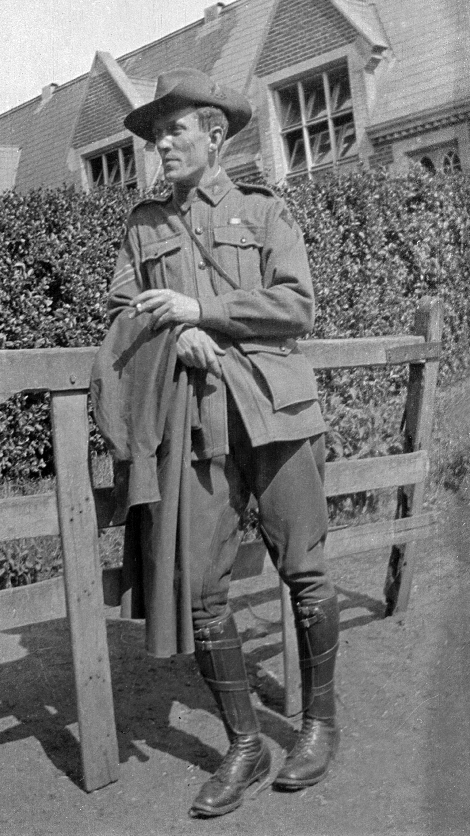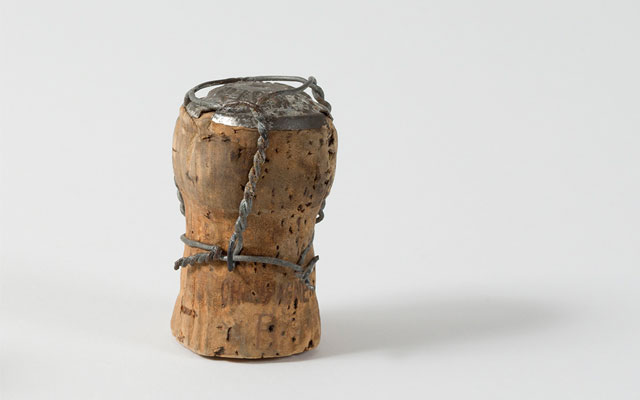In a major new exhibition at the Ian Potter Museum of Art, Melbourne-based multidisciplinary artist Brook Andrew challenges popular narratives around the Anzac legend to reveal and highlight stories hidden over time
Mementos of an avid collector

Ray Jones Collection 1981.0081, NN/2520
With his enlistment on 17 February 1915, 25 year-old Ray Jones began a weekly correspondence with his family back home in Australia and with his sister Annie who from 1915 to 1919 served as a missionary in China.
The letters, judiciously numbered to alert his correspondents to items lost or gone astray, also contained a rich and varied collection of souvenirs from the front and from Jones’ sojourns in cities and towns throughout Europe including stints in Egypt, Gallipoli, France and Belgium and, thereafter in England where, because of persistent ear problems, he saw out the war.
The archive of 428 letters to and from Jones, and the entire collection of his wartime diaries, war journals, pamphlets, programs, newspaper clippings, photographs and objects are held in the University of Melbourne Archives in the Ballieu Library.
Evoking memories across centuries and continents

At 10.30 on the morning of Thursday April 25 1918, an Anzac Day Commemoration Service was held at Westminster’s Central Hall in London. Ray Jones sent the program of the service home to his parents, along with a champagne cork souvenired from a celebration dinner the same evening. How he obtained the program or the cork is not revealed in his letters home. The fact that he was living and serving in a rural French village at the time only increases our curiosity one hundred years after the events Australia soldier Ray Jones has preserved for future generations.
For artist Brook Andrew and Ian Potter Museum curator Vincent Alessi, this champagne cork evoked emotions not commonly elicited by war and conflict.
"When I first saw the cork it brought an enormous smile and a great sense of joy," says Mr Alessi. "Amongst the usual depiction of war as horrific and brutal here was an object that spoke of happiness and good times.
"It revealed a real human element and also conjured up images of innocent celebration for the ending of something terrible and the promise of better times.
How he obtained the program or the cork is not revealed in Ray Jones' letters home. The fact that he was living and serving in a rural French village at the time only increases our curiosity, one hundred years hence, about these objects and mementos, and the circumstances under which the Australian soldier collected them.
Using art to engage and challenge
Brook Andrew's Sanctuary: Tombs of the Outcasts focuses on stories which have been forgotten or are no longer prominent in the dominant Anzac narrative. The intention, according to Alessi, is to draw attention to the human experience of war through objects and archives which are not obvious and didactic.
"Many objects in the exhibition remain purposefully open to interpretation," says Alessi. "This is really important as both Brook and I really wanted people to engage with the exhibition and to think about conflict from a personal experience.
Such a simple object, like a cork, enables this to happen. People will think about it in different ways and hopefully will also construct their own narrative when looking at it alongside other objects."
Brook Andrew’s Sanctuary: Tombs of the Outcasts opened to the public in April and will run until August 9 .
Indigenous Anzacs, a public lecture by Professor Marcia Langton, Brook Alexander and facilitated by Maxine McKew, will be hosted by the University of Melbourne on Wednesday 27 May.
Links
University of Melbourne Archives